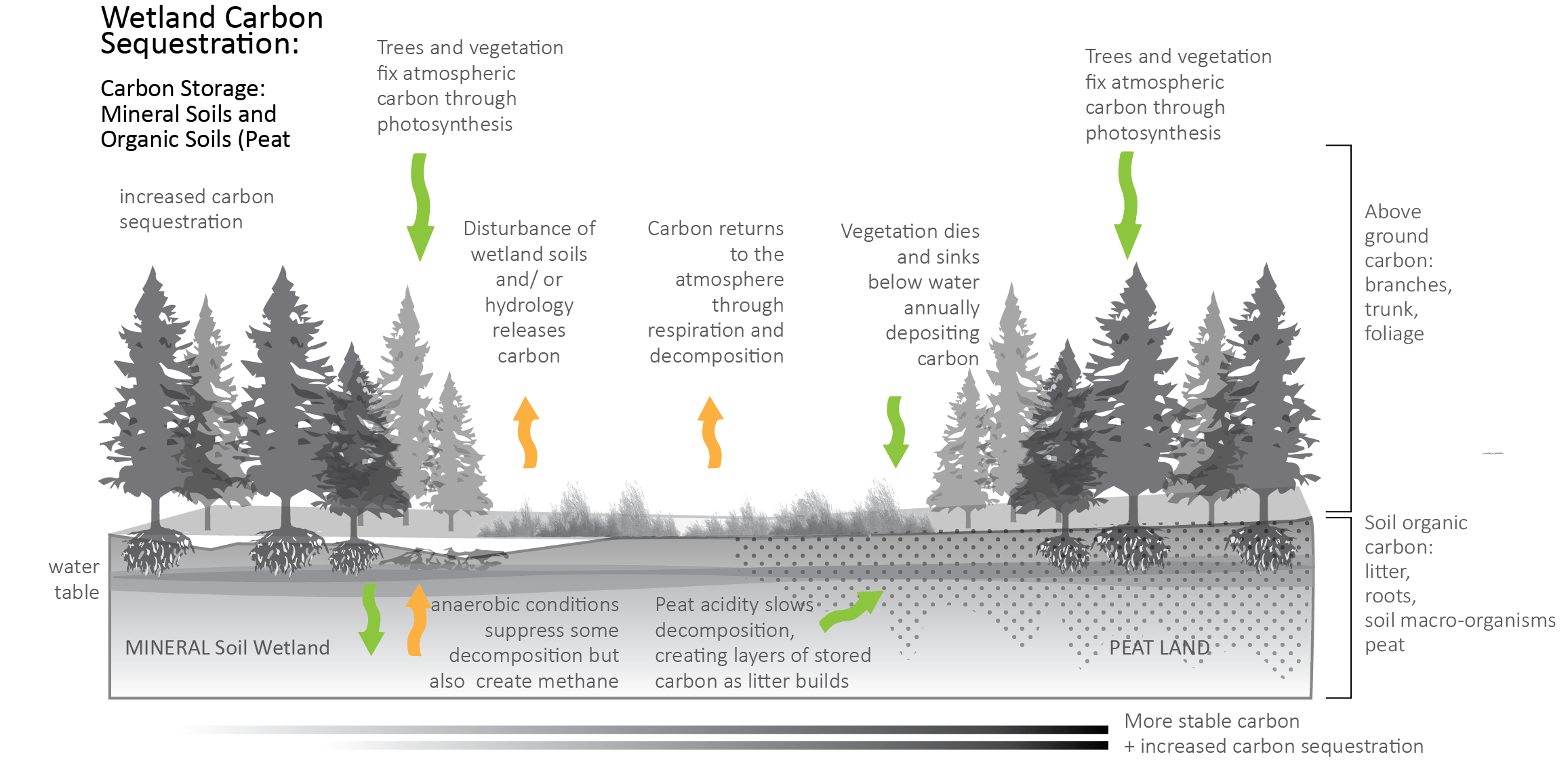
Wetland restoration is an effective strategy to sequester and store atmospheric carbon dioxide, mitigate climate change, and promote biodiversity conservation. Here's how it works:
Why wetlands?
- Carbon storage: Wetlands can store significant amounts of organic carbon in their soils, vegetation, and aquatic ecosystems.
- High carbon density: The unique combination of waterlogged conditions, plant growth, and microbial activity creates a high-carbon-density environment that can sequester large quantities of CO2.
- Long-term storage: Carbon stored in wetlands can remain there for centuries or even millennia.
Wetland restoration techniques
- Revegetation: Planting native vegetation species to re-establish the natural hydrological and ecological processes within a degraded or restored wetland area.
- Hydrologic restoration: Restoring water flow, depth, and duration to mimic pre-disturbance conditions, promoting healthy plant growth and carbon sequestration.
- Soil amendments: Adding organic matter (e.g., compost) to improve soil fertility and structure, enhancing microbial activity and carbon storage potential.
- Invasive species removal: Eradicating non-native plants that can outcompete native vegetation for resources, promoting biodiversity conservation.
Benefits of wetland restoration
- Carbon sequestration: Wetlands can store significant amounts of CO2 from the atmosphere, contributing to climate change mitigation efforts.
- Biodiversity enhancement: Restored wetlands support a wide range of plant and animal species, improving ecosystem resilience and function.
- Water quality improvement: Healthy wetland ecosystems help maintain water quality by filtering pollutants and sediments out of surface waters.
- Flood control: Wetlands can act as natural buffers against flooding events, reducing the risk to nearby communities.
Challenges and considerations
- Land availability: Finding suitable land for restoration efforts may be limited in areas with high population density or competing land uses (e.g., agriculture).
- Costs: Restoring wetland ecosystems requires significant investment in planning, design, implementation, and maintenance.
- Community engagement: Effective communication and collaboration are essential to ensure that local communities support and participate in restoration efforts.
Examples of successful wetland restorations
- The Everglades Restoration Project (USA): A comprehensive effort to restore the vast freshwater ecosystem in south Florida, focusing on hydrologic restoration and vegetation re-establishment.
- Wetlands for Water Initiative (Canada): An initiative aimed at restoring degraded wetlands across Canada's provinces, prioritizing water quality improvement and biodiversity conservation.
In conclusion, wetland restoration offers a promising strategy to sequester carbon dioxide from the atmosphere while promoting ecosystem services like flood control, water filtration, and biodiversity enhancement.

